March 14, 2025
Contact Center Automation: How It Works & Why It Matters
Contact center automation is the best response to a world that increasingly relies on digital tools to function. Customers are less patient, and every call has their satisfaction hanging on a loose balance.
Human agents can do their best, but they need help, and automation brings that needed assistance. Contact center automation works through Artificial Intelligence to interact with customers with the goal of increasing their satisfaction.
We will examine what contact center automation, how it works, and why it matters today.
What Is Contact Center Automation?

Contact center automation can be defined as engaging with customers through AI. These machines typically work alongside human agents in customer support and other services.
The automation here often involves integrating chatbots, voice bots, and other AI-powered tools. It also measures the effect on customers through analytics so you can know what to improve on.
Some critics are concerned about automation, and one concern is its potential to replace humans. But that needn’t be the case, nor is it wise. Instead, contact center automation works alongside humans.
How Contact Center Automation Works
Contact center automation works in different ways. Below are some of them:
1. AI-Powered Chatbots and Virtual Assistants
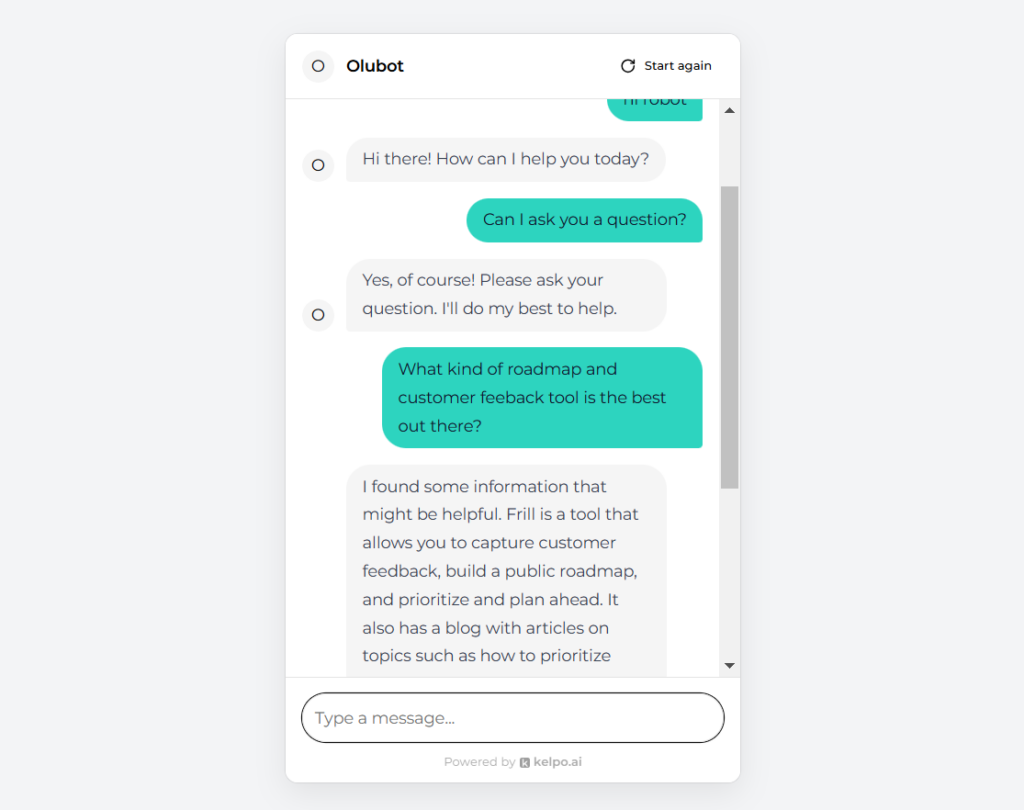
AI chatbots and virtual assistants are popular forms of contact center automation. They support customers through their responses to queries, such as scheduling an appointment. They also field questions with their FAQs and can handle complaints.
Chatbots and virtual assistants (the software, not the humans) are often trained to handle these queries with minimal human interaction. Through Natural Language Processing, these machines analyze customer messages, get the intent, and respond.
2. Interactive Voice Response (IVR) Systems
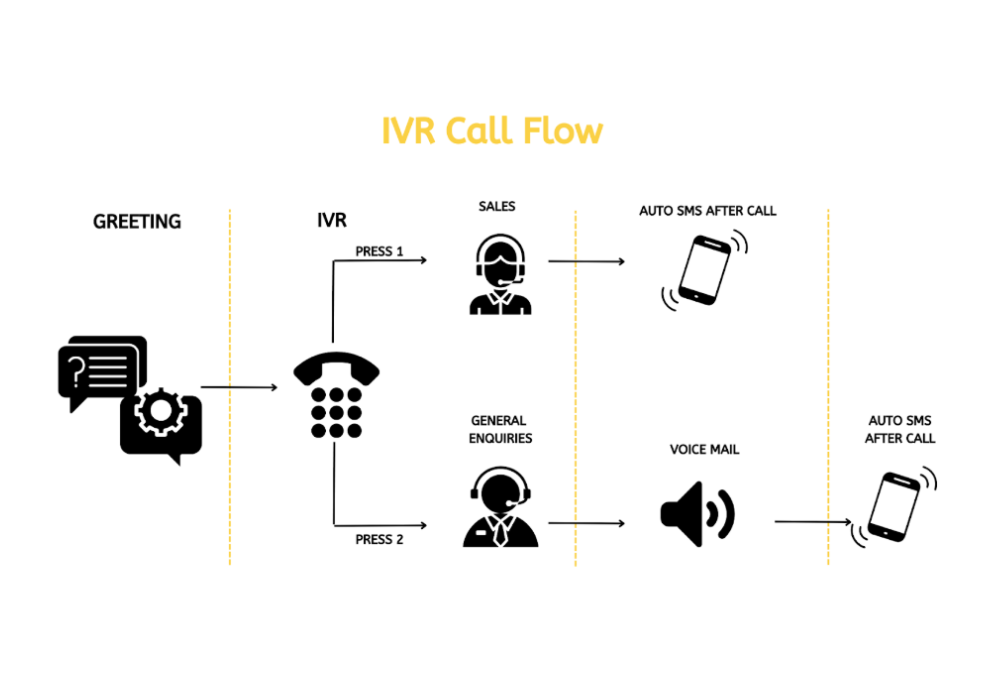
Another form is the Interactive Voice Response (IVR). It works through phone and voice prompts, speaking to customers in place of a human. Now, IVR doesn’t discuss like a human representative would. Instead, it provides a menu and options for customers to choose from.
The advanced type can communicate in a human-like form. However, they typically transfer complex queries to a human agent.
3. Automated Call Routing and Smart Queues
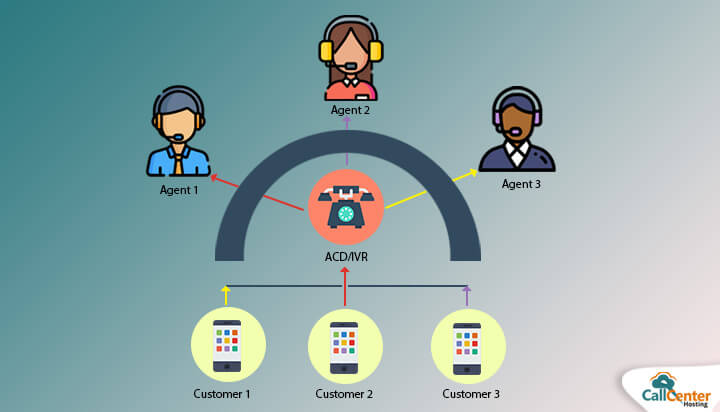
The problem with reaching customer service is usually the long wait. The customer just needs to get their issue solved, but then they get stuck with an “on-hold music.”
Contact center automation provides a solution through automatic call routing. Once the customer makes a query, they are immediately linked with the right person to handle it. The system uses past history, conversations, and current needs to work with the customer.
4. Self-Service Portals and Knowledge Bases
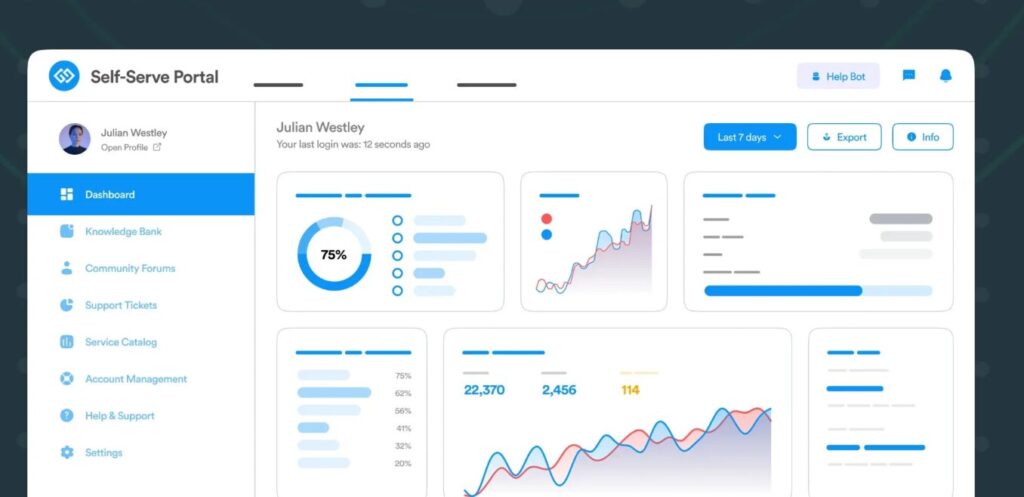
Many customers want to access resources and find solutions by themselves. Automation tools can make this possible through a knowledge base. The latter should be filled with useful information like FAQs, articles, and troubleshooting guides.
The systems first analyze the customer’s question, then suggest articles and other guides from the knowledge base. E-commerce platforms also provide self-serving tools for customers to solve problems.
5. AI-Powered Sentiment Analysis
When customers contact an organization, they usually are in a particular emotional state: anger, impatience, sadness, or even panic. AI-powered sentiment analysis captures this emotion to provide an appropriate response.
The AI tool examines the customer’s message, choice of words, punctuation, tone, and even pitch (on a call). Through the examination, it detects the emotion and responds appropriately.
If, for example, a customer sounds like hyperventilation is on the way, AI can immediately reach out to the needed expert.
6. Automated Follow-Ups and Customer Feedback Collection
Feedback is gold for businesses, and contact center automation can get these. After the call, the system can follow up with an email, a survey, or a short SMS.

Using the feedback, AI can suggest ways to improve and show patterns.
Why Contact Center Automation Matters
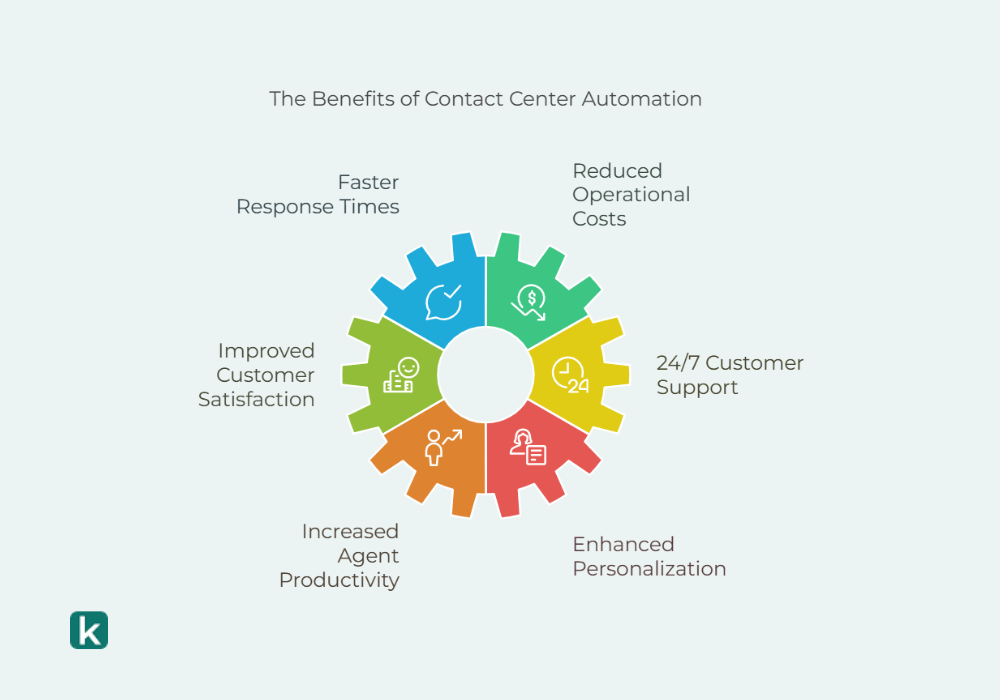
So, what’s the big deal, anyway? Why does contact center automation matter? Because of the value they bring to an organization.
1. Faster Response Times
Instant service makes customers happier and more satisfied and improves brand image. Customers are also likely to trust a business that meets their needs instantly. Automation provides prompt answers, which helps both the business and the customer.
2. Reduced Operational Costs
Automation helps save the labor cost a business will use to hire and train additional workers while still providing quality.
Hiring and training human agents is expensive. Automation reduces labor costs while maintaining high-quality service. Chatbots can handle up to 70% of issues, and companies that use them save up to 30% of the cost.
3. Improved Customer Satisfaction
We’ve already said this, but it needs to be repeated. Automation improves customer satisfaction through quick responses, and even more so when the answers are correct.
Customers don’t need to wait for long, repeat themselves constantly to the human agent, or even have their calls misrouted.
4. 24/7 Customer Support
Contact center automation is always available, even at night, when human agents would likely be asleep. By investing in systems, businesses can remain available 24/7. Machines don’t sleep.
As a result, even if your customer needs help at 3 a.m., the systems are available to handle their requests.
5. Increased Agent Productivity
Routine tasks can bug humans down, leaving them unable to focus on pressing matters. Automation can take over these repeated tasks so humans can focus on more complex interactions. With their focus, human agents can become more productive.
6. Enhanced Personalization
AI automation tools are also good at creating personalized experiences that engage customers. Using customer history and preferences, the system gives personalized answers that make the said customer feel valued.
The Future of Contact Center Automation
As AI technology advances, contact center automation will continue evolving. Here are some future trends:
- Conversational AI & Emotional Intelligence: AI will become more human-like in its interactions, understanding emotions better.
- Omnichannel Automation: Seamless transitions between chat, phone, email, and social media support.
- Predictive Analytics: AI will anticipate customer needs before they ask, offering proactive solutions.
- Voice AI & Speech Recognition: AI-driven voice assistants will provide even more natural conversations.
Frequently Asked Questions
Will Contact Center Automation Take Human Jobs?
The purpose of all types of automation is not to supplant humans. Instead, it takes up routine tasks and partners with human agents. Of course, a business using automation will not need too many human hands, but it also allows human workers to use their skills in more important areas. Every business must learn to balance both.
Is Automation Expensive?
The initial cost of automation is higher than hiring workers, but when you examine it from a long-term perspective, it saves more money, increases conversions, and makes customer retention stronger.
What are the Challenges of Automation?
Automation has some challenges, including technical issues, cost, the need for expertise, and even ethical concerns that can arise. Businesses must be prepared for eventual problems.
Conclusion
Contact center automation is revolutionizing customer service. By leveraging AI, machine learning, chatbots, and smart routing, businesses can enhance efficiency, reduce costs, and improve customer satisfaction.
However, automation should complement—not replace—human agents. The best strategy is a hybrid approach where AI handles routine tasks while humans focus on complex, high-value interactions.
As technology continues to evolve, companies that embrace automation will stay ahead, delivering faster, smarter, and more personalized customer experiences.





